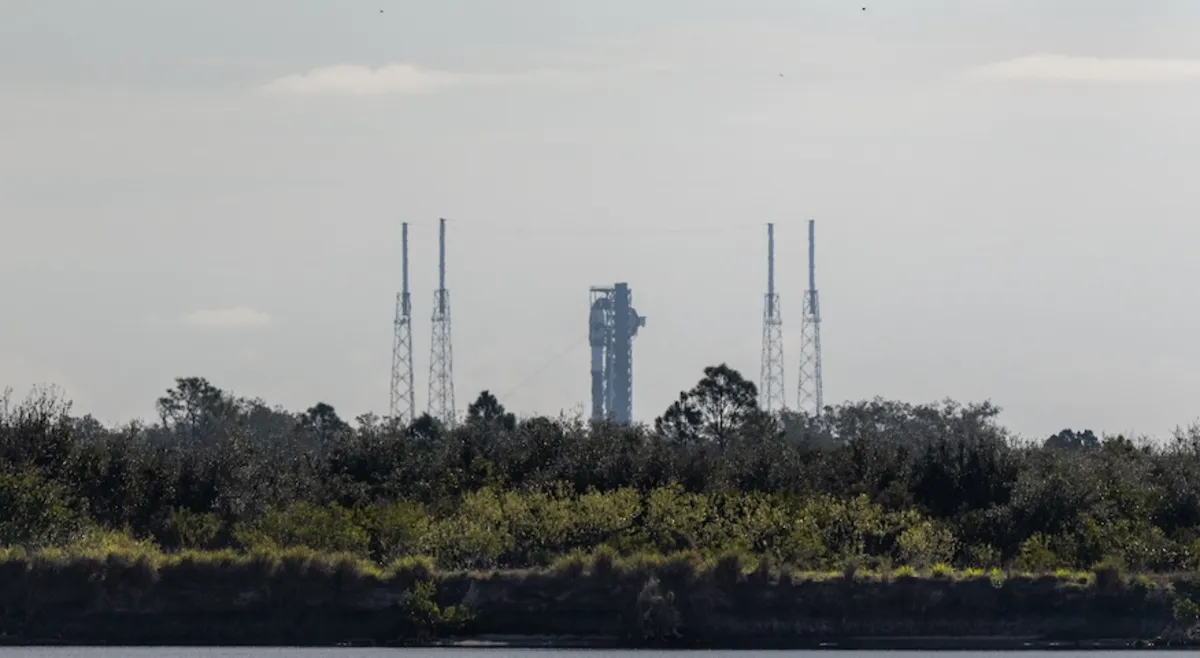
Update March 30, 2:50 p.m. EDT: SpaceX has postponed the launch time of its highly anticipated mission. The company aims to conclude the weekend with a Falcon 9 rocket carrying a batch of 28 Starlink V2 Mini satellites. However, the weather forecast for Sunday presents significant challenges, as meteorologists are monitoring storms that could bring strong wind gusts and even small hail.
The liftoff of the Starlink 6-80 mission from Space Launch Complex 40 at Cape Canaveral Space Force Station is now targeted for 4:37 p.m. EDT (2037 UTC) on Sunday, March 30. Spaceflight Now will provide live coverage starting approximately one hour before the scheduled launch time.
Launch weather officers from the 45th Weather Squadron have indicated a stark contrast in conditions from Saturday to Sunday. While Saturday was characterized by slightly windy and sunny weather, forecasts for Sunday indicate a “dramatic turn for the worse.” Meteorologists have noted only a 20 percent chance of favorable conditions for the launch.
Morning showers and storms are expected to develop along the Atlantic coastal waters on Sunday morning. As the day progresses, sea-breeze-driven showers with embedded thunderstorms are likely to form across interior Florida, moving eastward toward the Spaceport by evening. “Some of these storms may pack strong wind gusts and even small hail,” the meteorologists reported.
The forecast also highlights concerns regarding cumulus clouds, anvil clouds, and lightning. Additionally, the recovery weather for the droneship ‘Just Read the Instructions’, located in the Atlantic Ocean, is deemed a “moderate” risk on a scale of low, moderate, and high. If the launch is postponed to Monday, conditions are predicted to improve, offering a 65 percent chance of favorable weather for a launch window that opens at 2:57 p.m. EDT (1857 UTC). This would occur just hours before the planned launch of the Fram2 astronaut mission to a polar orbit.
For the Starlink 6-80 mission, SpaceX will utilize the Falcon 9 first stage booster, tail number B1080. This booster will be making its 17th flight, having previously supported four missions to the International Space Station, the European Space Agency’s (ESA) Euclid observatory, and 10 earlier Starlink missions. Approximately eight minutes post-liftoff, B1080 is scheduled to land on ‘Just Read the Instructions’. If successful, this will mark the 113th booster landing on this droneship and the 424th booster landing overall.
Onboard the Falcon 9 rocket are 28 Starlink V2 Mini satellites, which constitute the largest batch of this satellite type to be launched in a single mission, surpassing the previous record of 27 satellites from the Starlink 11-8 and 11-7 missions. In its 2024 progress report, SpaceX revealed that the Starlink V2 Mini Optimized satellites feature a Doppio Dualband antenna, enhanced avionics, propulsion, and power systems. These advancements have allowed for mass optimization of the satellites for Falcon 9, enabling up to 29 satellites to be launched per mission – an increase of six satellites compared to the original V2 Mini design.
With this upcoming launch, SpaceX is on the cusp of achieving that target. Looking ahead, much larger Starlink V3 satellites are set to debut once the company’s 400-foot-tall Starship rocket becomes operational for launching payloads into orbit.